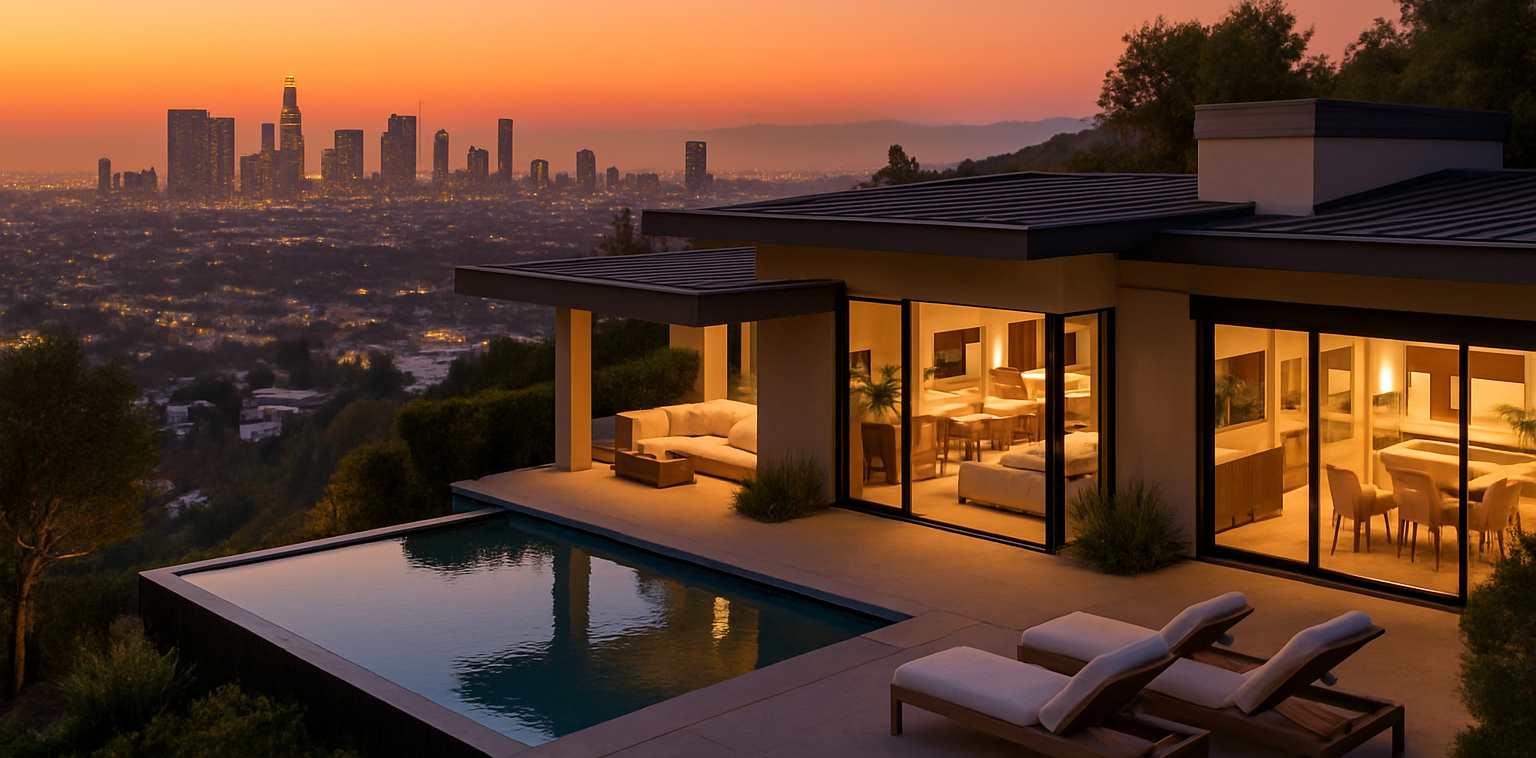Explore Historic Homes in the Hollywood Hills
Stories and history of the houses and the people who lived in them

Podcast
Deep dives into architecture, cinema history, and the lives inside Los Angeles landmarks.
Latest from the blog
-
Stahl House (Case Study House #22): Modernist Icon Above Los Angeles
The Stahl House, also known as Case Study House #22, is a steel and glass masterpiece perched above Los Angeles. Designed by Pierre Koenig in 1960, it became an icon of mid century modernism and one of the most photographed homes in the world, immortalized by Julius Shulman’s legendary nighttime image.
-
Lovell Health House (1929): Richard Neutra’s Modernist Breakthrough in Los Feliz
The Lovell Health House is Richard Neutra’s groundbreaking 1929 steel-frame masterpiece perched above Los Feliz. Designed for Dr. Philip Lovell, the home introduced International Style modernism to Los Angeles with its floating volumes, ribbon windows, and radical health-driven design. It remains one of the most influential modernist homes in the world.
-
The Ennis House (1924): Frank Lloyd Wright’s Mayan Revival Masterwork Above Los Feliz
The Ennis House, designed by Frank Lloyd Wright in 1924, is the pinnacle of his textile-block experiments. Perched above Los Feliz with sweeping city views, the house blends Mayan Revival geometry, cast concrete blocks, and cinematic presence, making it one of Wright’s most iconic and influential Los Angeles works.
-
The Cedars (1926): Hollywood’s Gothic Masterpiece in Los Feliz
The Cedars, designed for filmmaker Maurice Tourneur in 1923, is a Mediterranean Revival landmark overlooking Los Feliz. Its grand terraces, sweeping arches, and Hollywood lineage have made it a magnet for actors, musicians, and legends for over a century, capturing the spirit of early cinematic Los Angeles.
-
The DeMille Estate (1913): Old Hollywood’s Grand Hilltop in Laughlin Park
The DeMille Estate in Laughlin Park, built in 1914 for filmmaker Cecil B. DeMille, is one of the earliest Hollywood power homes. With its Italianate architecture, sweeping gardens, and rich film history, the estate reflects the birth of Hollywood itself and the rise of Los Angeles as a cultural capital.







